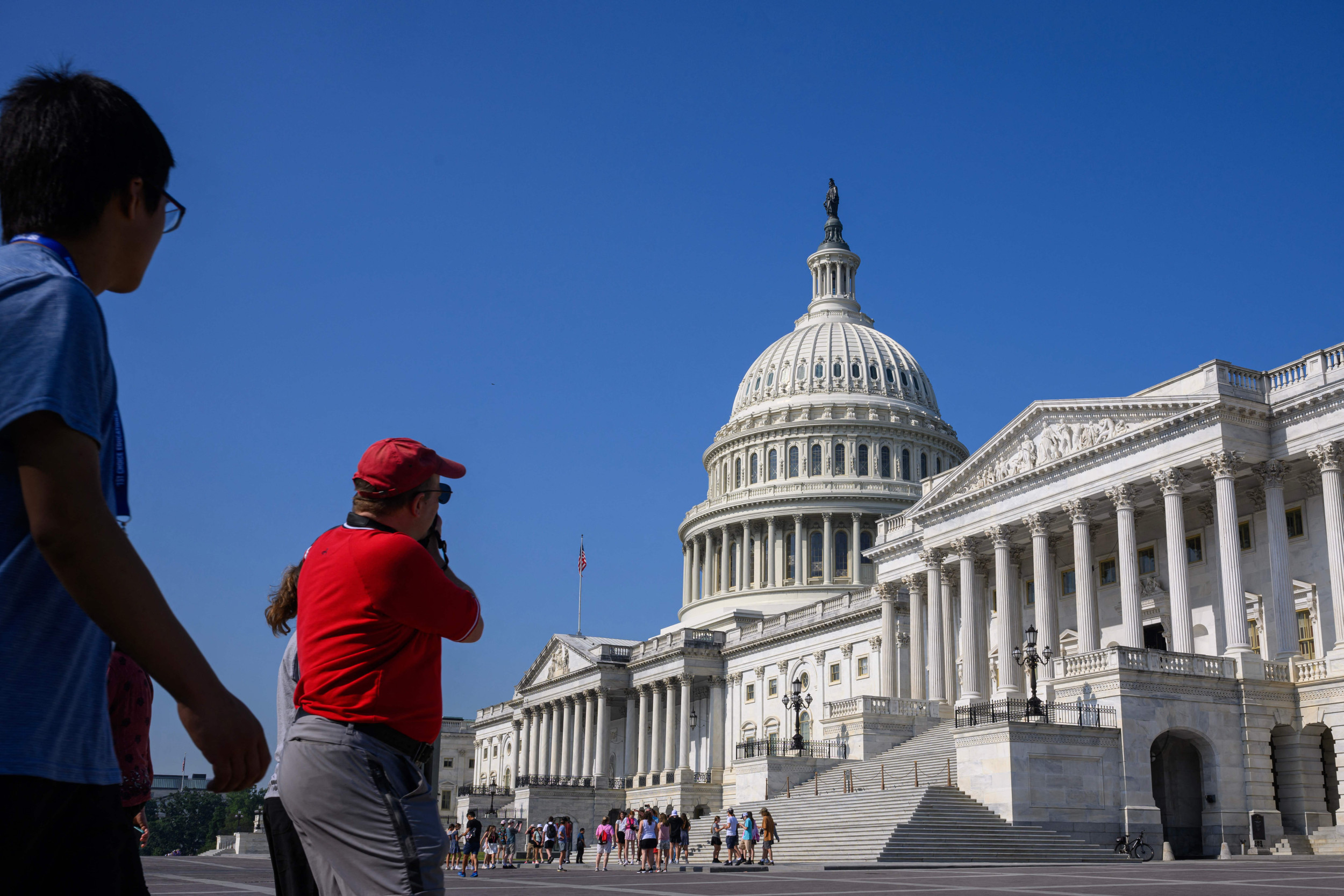Low water levels at Lake Mead prompted the National Park Service (NPS) to convert the Boulder Harbor boat ramp to a walking trail.
Lake Mead, which is in Nevada and Arizona, has suffered from a multi-year drought that has severely depleted the reservoir. Last winter, an above-average snowfall supplemented the water levels, but the lake still has nearly 170 feet of water to regain before making a full recovery. Low water levels have exposed sunken boats and created a "bathtub ring" stain of calcium carbonate on the surface of the rocks.
The most recent victim of the low water levels is the boat ramp, which is now closed to vehicles. On Tuesday, the NPS announced that public vehicle access to the shoreline was no longer allowed at the ramp.
The ramp was closed to boats in June 2021, when water levels were at about 1,070 feet. Water levels fell even more in 2022, just barely clearing 1,040 feet at their lowest point last July. The low levels fueled concerns of a dead pool, in which levels are so low that water can no longer flow downstream. Lake Mead has partially recovered and, as of Wednesday, the lake was at 1,061 feet.

After the ramp was closed in 2021, visitors could still drive from the paved launch ramp to the shoreline. Now, the area is closed to vehicle traffic.
"The area will now be a walking trail due to water rise and hazards in the old marina. This closure to public vehicle access is for your safety and the protection of the vegetation in this area," the Lake Mead National Recreation Area, which is part of the NPS, wrote in a Facebook post.
Dirt berms and concrete barriers are in place to block vehicle access to the shore. Newsweek reached out to the NPS by email for comment.
Boats can still be launched at Hemenway Harbor, Echo Bay and South Cove.
Despite hope that the lake will return to what it once was, Lake Mead's chance at a full recovery is slim. Jennifer Pitt, director of the National Audubon Society's Colorado River Program, previously told Newsweek that it is possible only if three years of average snowfall occur with no water use from the reservoir.
University of California, Davis professor Jay Lund echoed the sentiment when he previously told Newsweek that humans must reduce their water use in the region, even if it means fallowing agricultural fields. Up to 80 percent of water from the Colorado River—which feeds Lake Mead—is used for agricultural purposes.
Last month, a study from the American Geophysical Union revealed that the Colorado River has lost more than 10 trillion gallons of water—nearly the size of Lake Mead—over the past 21 years.
In addition to above-average precipitation, more water cuts for states in the lower Colorado River basin have been implemented this year in hopes of preserving the river's water, allowing the river and its reservoirs to recover. In May, Arizona, California and Nevada pledged to cut 3 million acre-feet from their annual water usage by 2026. In return, they will receive federal compensation.








